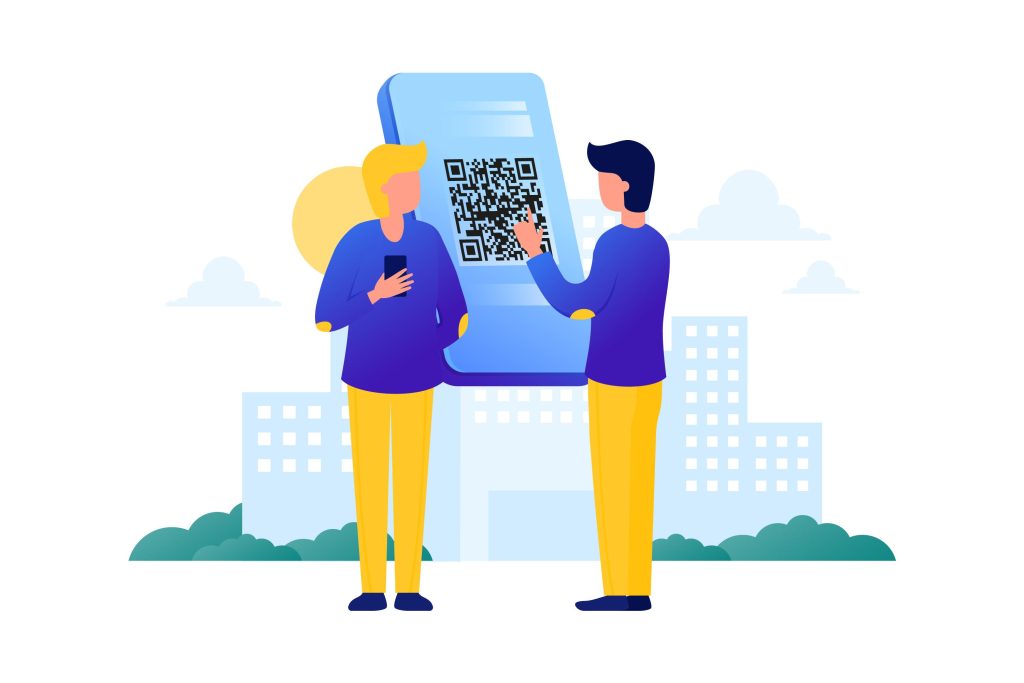In today’s digital world, QR codes have become an essential tool for businesses and individuals alike. They offer a quick and efficient way to share information, connect with customers, and streamline various processes. But what exactly are QR codes, and how do they work? This comprehensive guide will walk you through everything you need to know about QR codes.
What is a QR Code?
QR (Quick Response) code is a two-dimensional barcode that can store a significant amount of data. Unlike traditional barcodes that store information horizontally, QR codes store data both horizontally and vertically, allowing them to hold much more information.
Originally developed in 1994 by Denso Wave, a subsidiary of Toyota, QR codes were initially used for tracking automotive parts. Today, they are used in a wide variety of industries, from marketing and retail to healthcare and education.
How Do QR Codes Work?
QR codes consist of black squares arranged on a white background. When scanned by a smartphone or QR code scanner, the encoded information is quickly interpreted and converted into readable text, URLs, contact details, or other data. Here’s a breakdown of how it works:
- Encoding: The data (URL, text, or other information) is converted into a QR code pattern using an algorithm.
- Scanning: A QR code scanner (usually a smartphone camera) reads the pattern by capturing the light reflections from the black and white squares.
- Decoding: The scanner’s software decodes the pattern into readable information and displays it on the screen.
Types of QR Codes
There are two main types of QR codes:
- Static QR Codes: These codes contain fixed information that cannot be edited once generated. They are suitable for personal use, such as linking to a website or sharing contact details.
- Dynamic QR Codes: These codes allow you to change the linked data without altering the code itself. This makes them ideal for marketing campaigns, as they provide flexibility and real-time tracking.
Applications of QR Codes
QR codes have found their way into various industries due to their versatility and ease of use. Here are some common applications:
- Marketing and Advertising: QR codes can be printed on posters, flyers, or product packaging, directing users to websites, promotions, or discount codes.
- Retail: Retailers use QR codes for contactless payments, product information, and loyalty programs.
- Healthcare: QR codes help in patient management, medication tracking, and sharing health records.
- Education: Educators use QR codes to share study materials, video tutorials, or quiz links.
- Events and Ticketing: QR codes on tickets allow for quick and easy check-in at events or concerts.
Benefits of Using QR Codes
- Convenience: QR codes offer a quick and efficient way to access information without typing URLs or filling out forms.
- Versatility: They can store a wide range of data, from website links to contact details and more.
- Cost-Effective: Creating and using QR codes is relatively inexpensive, making them an attractive option for businesses of all sizes.
- Trackable: Dynamic QR codes allow businesses to track scans, monitor user behavior, and analyze marketing campaign effectiveness.
- Engagement: QR codes encourage customer interaction, helping to drive traffic, boost engagement, and increase conversions.
How to Create a QR Code
Creating a QR code is simple and can be done using online QR code generators. Follow these steps:
- Choose a QR Code Generator: There are many free and paid QR code generators available, such as QRCode Monkey, QR Stuff, or Scanova.
- Select the Type of QR Code: Choose whether you want a static or dynamic QR code.
- Enter the Information: Input the URL, text, contact details, or other data you want the QR code to represent.
- Customize the Design: Some generators allow you to customize the color, shape, and design of your QR code.
- Download and Use: Once generated, download your QR code in the desired format (PNG, SVG, etc.) and start using it.
Best Practices for Using QR Codes
- Ensure Scannability: Make sure the QR code is large enough and has a clear contrast between black and white areas.
- Test Before Sharing: Always test your QR code to ensure it works correctly.
- Provide Instructions: Include a call-to-action (CTA) or brief instructions on how to scan the code.
- Track Performance: Use dynamic QR codes to track scans and measure the success of your campaigns.
The Future of QR Codes
With the rise of mobile technology and the growing demand for contactless solutions, QR codes are here to stay. Their use in payments, marketing, and information sharing is expected to grow, making them an essential tool for businesses and consumers alike.
Conclusion
QR codes are a powerful and versatile tool that can help you connect with your audience, share information quickly, and enhance your marketing efforts. Whether you’re a small business owner or a large enterprise, incorporating QR codes into your strategy can provide a seamless and engaging experience for your customers. Start using QR codes today and unlock the potential of this innovative technology!




